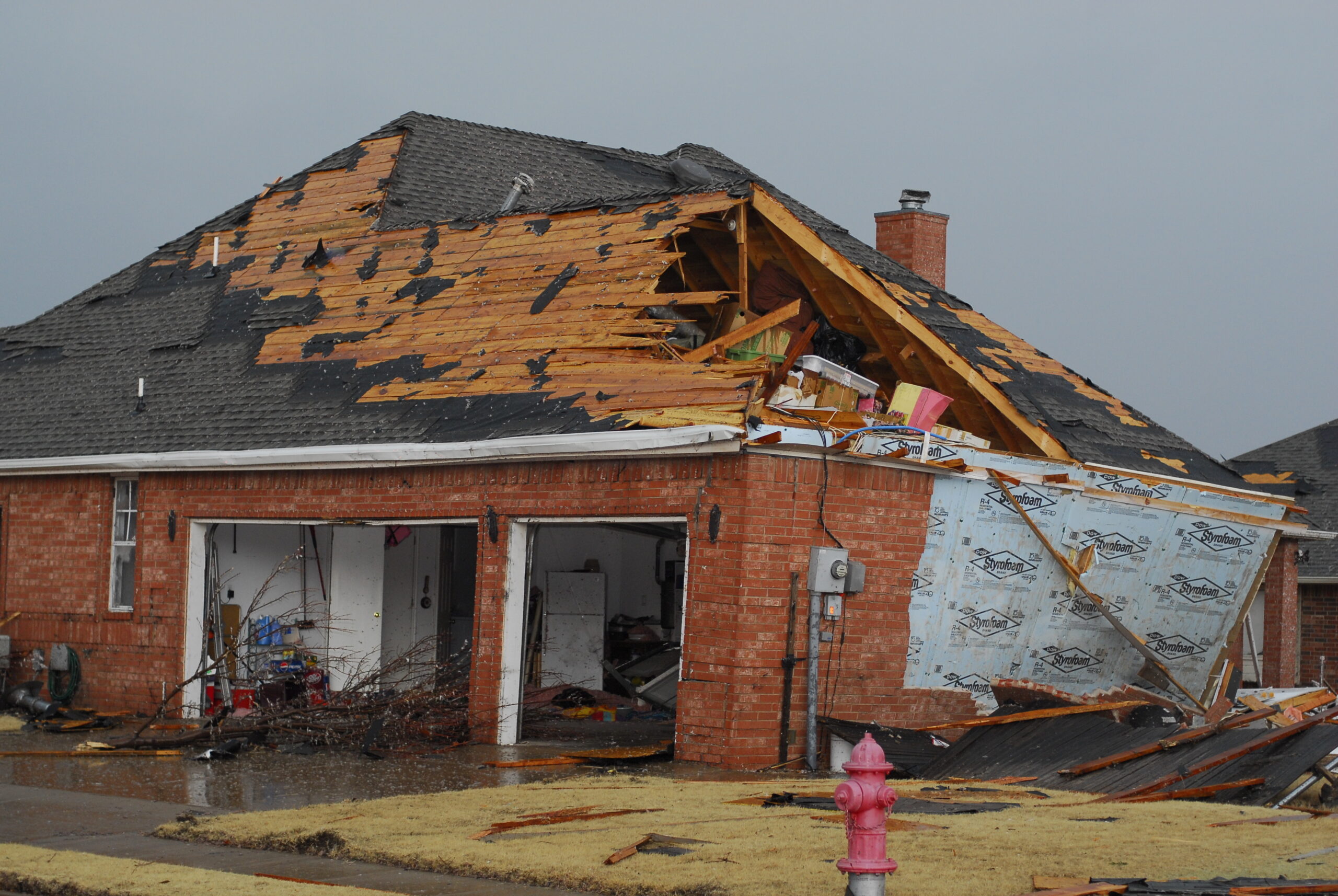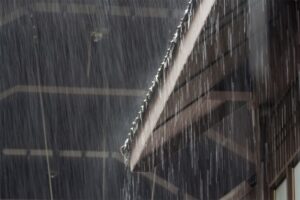The Best Storm Damage Roof Repair Services in Denver, Colorado
Posted by DigitalVue No Comments on The Best Storm Damage Roof Repair Services in Denver, Colorado Roofing
The Best Storm Damage Roof Repair Services in Denver, Colorado
Storm Damage to Your Roof
Storm damages in Colorado are not uncommon, and it’s essential to take care of your roof. Roofs are often overlooked when it comes to maintaining the overall health of our homes. However, roofs significantly protect us from the elements and keep us safe inside our homes. A properly maintained roof is essential to keeping out moisture and debris, reducing energy costs, preventing leaks, and helping protect the interior of your home.
One of the most significant sources of roof damage is the weather. Storms like hailstorms and hurricanes can cause severe wind and even structural damage to your roof. This damage can lead to water intrusion into your attic space, causing mold growth and rot. In addition, damaged shingles can fall off, exposing your home to further damage.
When you notice signs of storm damage, contact Roofing Systems immediately. Our team of experienced professionals can provide you with professional roof repair services, including roof hail damage repair, leak detection, inspection, and more. We offer fast response times and affordable roof repairs and replacement options.
Responding to Storm Damage
Roofing Systems offers many home restoration and roofing services to help homeowners fix any roof storm damage. You can find out what type of damage your roof sustained during a storm and what to do next. There are several ways to check for roof damage, including taking photos and videos, looking at the roof from the ground, and inspecting it yourself. Once we inspect the damaged area, we will give you instructions on what needs to be done. Call a professional at Roofing Systems if you see signs of water intrusion, such as wet spots, cracks, or mold growth.
Types of Roof Storm Damage
Roof storm damage happens when high winds blow across roofs and push against the shingles. This force causes the shingle to bend or twist, creating tiny cracks that allow moisture to penetrate the building. If you notice any signs of storm damage on your roof, you must call a professional roofer at Roofing Systems as soon as possible.
Your Roof Is Essential
Homeowners often overlook that their roofs are one of the essential parts of their homes. But even though many people think of their roofs as just another part of the house, their roofs protect them from some of the worst weather conditions.
If you live in a region prone to hurricanes, tornadoes, hail storms, snowstorms, and other severe weather events, you probably understand why having a solid roof is essential. A leaky roof can lead to mold growth, water damage, and structural problems like rot and termite infestation. And while many homeowners don’t realize it, there is good reason for that: Homeowner surveys consistently show that homeowners with damage to the roof are more stressed than homeowners looking for any other type of home repairs.
So what does this mean for you? If you’ve got a roof that needs fixing, you’re likely feeling anxious about getting it fixed. You might feel worried about whether you’ll be able to afford it, or maybe you’re concerned about what it will cost to repair. Or perhaps you’re wondering what will happen if your roof doesn’t hold up under heavy rainfall and you end up paying for damages yourself.
But none of those things matter compared to the safety of your family. So let’s look at the types of damage you could experience with a leaking roof and what you can do about it.
The biggest thing to remember here is that every roof is different. Some roofs are built differently than others, some materials are better suited to certain climates, and some regions see more extreme weather patterns than others. For example, our area gets very little rain, so we rarely have issues with leaks. However, if you live elsewhere, you may have a problem with water damage from leaks.
In addition to the specific material used to build your roof, several factors determine whether or not you will experience a leak. These include the size of your roof, the climate where you live, and the age of your roof.
Detect Signs of Roof Damage from Hail
Hail damage is easy to detect because it leaves behind large holes in the roofs of homes. If you notice signs of roof damage, such as missing shingles, look for dents or cracks in the roof. These are telltale signs of hail damage.
Hail Damage to Your Roof
Hail storms are common during spring, and while most roofs are designed to withstand minor hailstorms, large amounts of rain can do severe damage. If you notice small cracks in your shingles or see loose granules around the edges, it could mean that hail damaged your roof.
While this type of damage isn’t usually noticeable unless you know what to look for, there are some easy ways to spot signs of hail damage. For example, if you notice that your shingles are missing, check to ensure that the nails holding the shingles in place haven’t pulled out. Also, note how many granules are scattered across the roof’s surface. This can indicate whether the storm caused enough force to loosen the granules.
Identifying Roof Hail Damage
Hailstorms can cause extensive damage to roofs. In fact, according to the National Weather Service, over one million homes experience storm-related damage each year. While most people don’t think much about it, hail damage to roofs can lead to severe issues such as leaks and mold growth.
If your area has experienced heavy rains lately, there’s a good chance that hail-damaged roofs are already present. But even if a big storm hasn’t hit you, you still need to check out your roof.
Check For Holes
You can simply stand next to the house and look up. Looking up close is the best way to find holes in your roof. Look for small, roundish objects that might be hiding under the shingles. These are likely hail stones.
You can also use binoculars to spot potential hail damage. Check around the roof’s edges where the shingles meet the fascia board. This is where the most significant problems tend to occur.
Look Out For Cracks
Another sign of hail damage cracks in the shingles. They’re usually caused by the same thing that creates holes—hailstones. When hail strikes the roof, the force pushes the shingle upward, causing the nail heads to separate from the wood fibers. Eventually, the nails pull free and fall off, creating tiny gaps in the shingle.
Wind Damaged Roofs
High winds can cause damage to homes without warning. Check for wind damage, including missing shingles, loose flashing, and damaged chimney bricks. After a storm, look around your house for broken glass, debris, and fallen tree limbs. You might find some of these items near doors and windows. Remove anything you see inside the home. Also, ensure no cracks in walls, floors, ceilings, or roofs.
Water Damage
Water damage can be hard to spot, especially if you don’t know what to look for. But some telltale signs can help you identify potential problems and prevent further damage. A few days after a major storm, you might notice dampness inside or outside your home. You’ll likely see wet
carpeting, walls, ceiling tiles, furniture, and clothing. Moisture can cause mildew and mold, which can grow over time and spread to other areas of your property.
If you find water damage, immediately turn off utilities like electricity, gas, and cable TV to avoid electrocution or fire. Then, call a professional restoration team to assess the situation. They’ll use special equipment to locate where the leak occurred and determine how much damage has been done. Once the problem area is located, they’ll use drying agents to dry out the affected area and seal cracks to keep the moisture out.
Get a Roof Inspection
If you’ve had a severe weather event like a hurricane or tornado, chances are good you’ve experienced some roof damage. A roof inspection performed by a reputable roofing contractor at Roofing Systems can give you peace of mind knowing that your home is protected against future damage and help you prepare for potential claims.
- Roofing Systems specializes in roof inspections. Be sure to ask about experience inspecting roofs in your area. You want someone who knows what they are looking for during an inspection.
- Ask questions. We want to ensure you understand how the inspection works and why it matters. For example, why does the inspector look inside chimneys or vents? What types of instruments do we use to inspect roofs? How long does the inspection typically take?
- File a claim. In addition to helping you recover from the storm, a roofing inspection could save you money on repairs down the road. After the inspection, you’ll probably want to talk to your insurance agent about filing a claim.
Roofing Systems Offers Storm Damage Roof Inspection
Roof inspections are necessary because you never know what problems might arise. There are many reasons why it could become necessary to replace your roof. To make sure everything goes smoothly, we recommend scheduling a free inspection. We’ll come out to check your roof and give you helpful tips about how to keep it looking great. If you do decide to schedule a replacement, we’ll handle everything else.
When it comes to roofing repair after a storm, few companies can deliver the quality of workmanship and customer service that Roofing Systems does. We’re well known within our industry for being one of the best roofing contractors in the Denver area, and we offer various services to help homeowners protect their homes against future storms. Whether you want a simple fix or a complete replacement, we’ll ensure your home looks great again. Our expert roofers install durable, long-lasting materials that give you peace of mind knowing your roof will stand up to whatever Mother Nature throws. Contact us at 720-227-9228 to schedule a roof inspection!
- Tags :Storm Damage Repair
Recent Posts
7 Great Commercial Roofing Systems You Should Know About
Learn About Asphalt Composition Shingles in Denver, CO
Do you have any questions?
Contact us at the Roofing Systems office nearest to you or submit a business inquiry online
Contact Us

